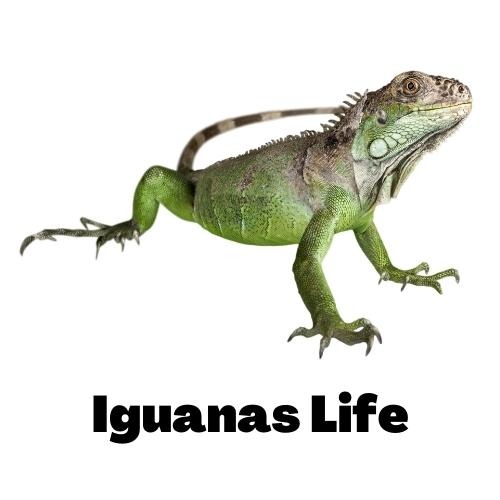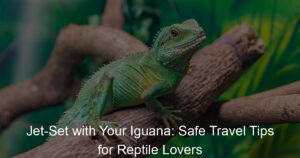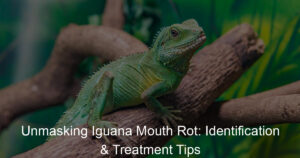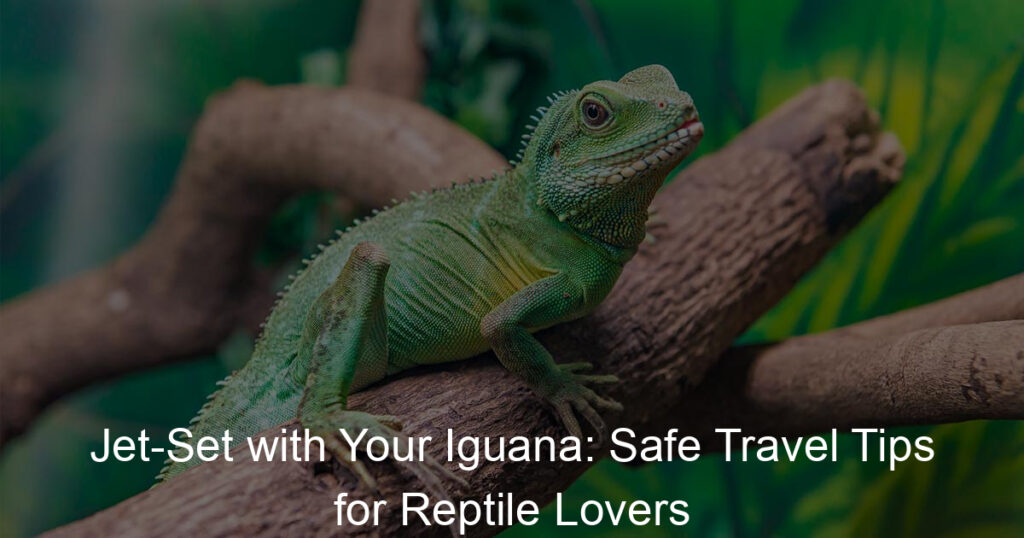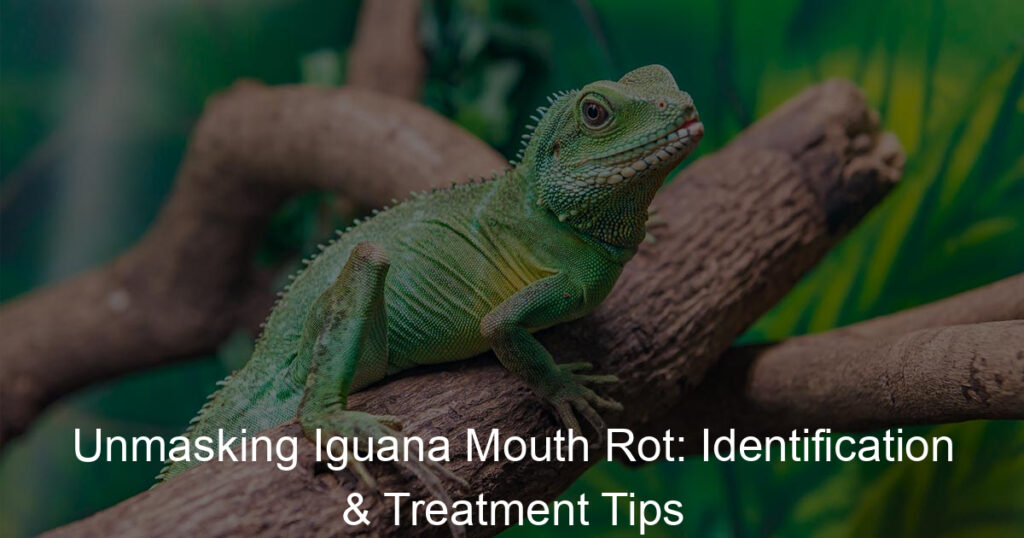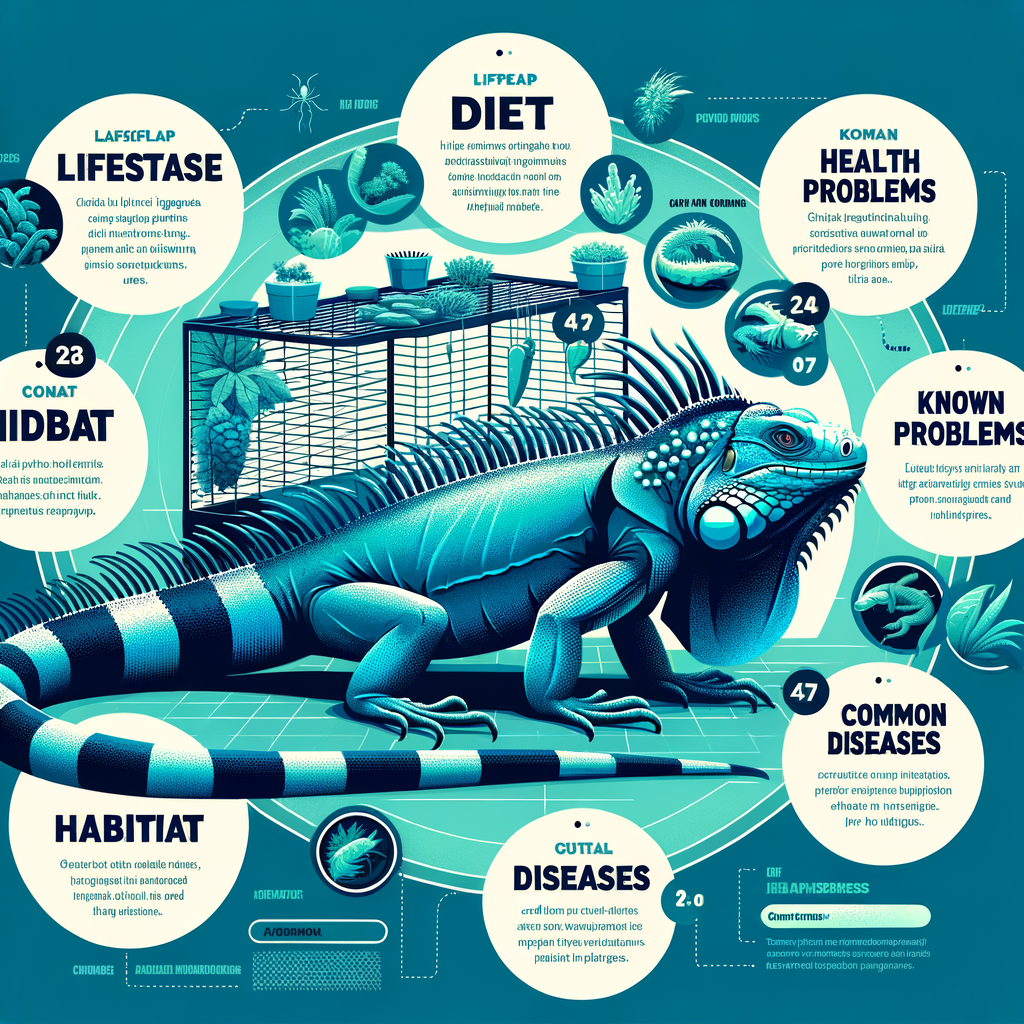
Introduction to Blue Iguana Care
Welcome to our comprehensive guide on Blue Iguana care. Blue Iguanas are fascinating creatures, known for their vibrant color and unique personality. However, caring for these exotic pets requires a significant commitment and a thorough understanding of their needs.
- Understanding the Commitment
- Importance of Proper Blue Iguana Care
Blue Iguanas are not your typical household pets. They require a lot of time, attention, and resources. They can live up to 20 years, sometimes even longer, which means owning a Blue Iguana is a long-term commitment. They need daily care, including feeding, habitat cleaning, and social interaction. They also require a spacious and well-maintained environment to thrive.
Proper care is crucial to the health and happiness of your Blue Iguana. Improper care can lead to health issues, such as metabolic bone disease, respiratory infections, and parasitic infestations. It can also lead to behavioral problems, such as aggression or self-harm. By providing proper care, you can ensure your Blue Iguana lives a long, healthy, and happy life.
In the following sections, we will delve deeper into the specifics of Blue Iguana care, providing you with a comprehensive guide to help you become the best Blue Iguana owner you can be. So, let’s embark on this exciting journey together!
Comprehensive Guide for Blue Iguana Owners
As a Blue Iguana owner, understanding your pet’s lifespan is crucial for providing the best care. This guide will help you understand the average lifespan of a Blue Iguana and the factors that can affect it.
Understanding the Blue Iguana Lifespan
Blue Iguanas are fascinating creatures with a lifespan that can surprise many. Let’s delve into the details.
- Average lifespan of a Blue Iguana
- Factors affecting lifespan
- Diet: A balanced diet rich in fruits, vegetables, and adequate protein can contribute to a longer lifespan.
- Environment: Blue Iguanas need a suitable habitat with the right temperature and humidity levels to thrive.
- Healthcare: Regular vet check-ups and timely treatment of any health issues can help extend an Iguana’s lifespan.
Blue Iguanas can live for an impressive 15 to 20 years in captivity, with some even reaching up to 25 years. This longevity makes them a long-term commitment for any pet owner.
Several factors can influence the lifespan of a Blue Iguana. These include:
In conclusion, understanding your Blue Iguana’s lifespan and the factors that affect it can help you provide the best possible care for your pet. Remember, a healthy and well-cared-for Blue Iguana can be a companion for many years to come.
Blue Iguana Diet
Understanding the dietary needs of a Blue Iguana is essential for its health and longevity. This section will guide you on what to feed your Blue Iguana, how often, and in what quantities.
- Understanding the Blue Iguana’s Dietary Needs
- Common Foods for Blue Iguanas
- Feeding Schedule and Portion Sizes
Blue Iguanas are primarily herbivores, which means they eat a diet consisting mostly of plants. They require a balanced diet of leafy greens, vegetables, and fruits. It’s important to note that not all plants are safe for Blue Iguanas. Some can be toxic and should be avoided. Always research before introducing a new food to your iguana’s diet.
Blue Iguanas thrive on a diet of leafy greens such as collard greens, mustard greens, and dandelion greens. They also enjoy a variety of vegetables like bell peppers, zucchini, and squash. Fruits such as apples, bananas, and berries can be given as treats. Remember, variety is key to a balanced diet.
| Food Type | Examples |
|---|---|
| Leafy Greens | Collard Greens, Mustard Greens, Dandelion Greens |
| Vegetables | Bell Peppers, Zucchini, Squash |
| Fruits | Apples, Bananas, Berries |
Blue Iguanas should be fed daily. Younger iguanas need to eat more frequently – about two to three times a day. As they grow older, they can be fed once a day. The portion size should be about the same size as the iguana’s head. Overfeeding can lead to obesity and other health issues, so it’s important to monitor your iguana’s weight and adjust the portion sizes as needed.
Blue Iguana Habitat
Creating a suitable environment for your Blue Iguana is crucial for its health and happiness. Let’s explore the key aspects of setting up an ideal habitat for these unique creatures.
- Creating a Suitable Environment
- Temperature and Humidity Requirements
- Choosing the Right Enclosure
Blue Iguanas are native to the Grand Cayman Island, where they enjoy a tropical climate. Therefore, it’s essential to replicate this environment as closely as possible. This includes providing plenty of space for them to move around, as well as areas for basking, hiding, and climbing. Use natural substrates like cypress mulch or coconut coir, and include items like rocks, branches, and plants to mimic their natural habitat.
Blue Iguanas require a specific temperature and humidity range to thrive. The daytime temperature should be between 85-90°F (29-32°C), with a basking spot reaching up to 95°F (35°C). Nighttime temperatures can drop to around 75°F (24°C). Humidity levels should be kept around 60-70%. These conditions can be achieved using heat lamps, ceramic heaters, and humidifiers.
Choosing the right enclosure is another essential aspect of Blue Iguana care. A young Blue Iguana can start in a 20-gallon tank, but as they grow, they will need a much larger space. Adult Blue Iguanas require an enclosure that is at least 6 feet long, 3 feet wide, and 6 feet high. This will provide them with enough room to move around and exhibit natural behaviors. The enclosure should be secure to prevent escapes and protect your Iguana from potential dangers.
In conclusion, creating a suitable habitat for your Blue Iguana involves careful consideration of their natural environment, temperature and humidity needs, and the right enclosure. By paying attention to these details, you can ensure your Blue Iguana thrives and lives a healthy, happy life.
Caring for Blue Iguanas
Blue Iguanas are unique and fascinating creatures. Caring for them requires a good understanding of their needs, especially when it comes to handling and socialization.
Handling and Socialization
Blue Iguanas are not naturally social creatures, but with proper handling and socialization techniques, they can become more comfortable with human interaction. Here are some key points to remember:
- Proper handling techniques
- Socialization and behavior
Handling your Blue Iguana correctly is crucial for their health and your safety. Always approach your iguana slowly and calmly, and never grab them suddenly or forcefully. Instead, gently scoop them up from below, supporting their entire body. Remember, sudden movements can scare them, leading to stress or even aggressive behavior.
Socializing your Blue Iguana can help them become more comfortable with human interaction. Start by spending time near their enclosure, allowing them to get used to your presence. Gradually, you can start to interact more directly, offering treats from your hand or gently stroking their back. Remember, patience is key. It may take time for your iguana to trust you, but with consistent, positive interactions, they will eventually become more sociable.
In conclusion, caring for a Blue Iguana requires patience and understanding. With proper handling techniques and consistent socialization, your Blue Iguana can become a comfortable and enjoyable companion.
Healthcare and Regular Check-ups
Just like humans, Blue Iguanas also need regular healthcare and check-ups to ensure they are in the best of health. Regular vet visits and health checks are crucial to their well-being.
- Importance of Regular Vet Visits
- Common Health Checks for Blue Iguanas
Regular vet visits are essential for Blue Iguanas. These visits can help identify any potential health issues early, making them easier to treat. Vets can also provide valuable advice on diet, habitat, and care. According to a study, regular vet visits can increase the lifespan of a Blue Iguana by up to 20%.
There are several common health checks that vets perform on Blue Iguanas. These include:
| Health Check | Description |
|---|---|
| Physical Examination | This involves checking the iguana’s skin, eyes, mouth, and other body parts for any signs of disease or injury. |
| Weight Check | Blue Iguanas should be weighed regularly to ensure they are not underweight or overweight, both of which can lead to health problems. |
| Parasite Check | Vets often check for parasites, as these can cause a variety of health issues in Blue Iguanas. |
| Blood Tests | These tests can help detect any underlying health issues that may not be visible during a physical examination. |
Remember, a healthy Blue Iguana is a happy Blue Iguana. Regular healthcare and check-ups are key to ensuring your Blue Iguana lives a long, healthy life.
Blue Iguana Health Guide
As a Blue Iguana owner, it’s essential to understand the common diseases that can affect your pet and how to identify the signs of illness. This knowledge can help ensure your Blue Iguana lives a long and healthy life.
Common Blue Iguana Diseases
Blue Iguanas can be susceptible to a variety of diseases. Let’s look at how to identify signs of illness and the common diseases that can affect your pet.
- Identifying Signs of Illness
- Lack of appetite or drastic changes in eating habits
- Unusual or sudden weight loss
- Changes in stool consistency or color
- Difficulty breathing or excessive panting
- Lethargy or lack of activity
- Changes in skin color or texture
- Common Diseases and Their Treatments
Blue Iguanas, like other animals, can show signs of illness in various ways. Some common signs to watch out for include:
It’s important to note that these signs can indicate a variety of health issues, so it’s crucial to consult a vet if you notice any of them.
Here are some common diseases that can affect Blue Iguanas, along with their treatments:
| Disease | Symptoms | Treatment |
|---|---|---|
| Metabolic Bone Disease | Weakness, soft bones, deformities | Supplementing diet with calcium and vitamin D3 |
| Respiratory Infections | Difficulty breathing, loss of appetite | Antibiotics and maintaining optimal habitat conditions |
| Parasites | Weight loss, changes in stool | Antiparasitic medication |
Remember, early detection and treatment are key to managing these diseases effectively. Always consult a vet if you suspect your Blue Iguana is unwell.
Preventing Health Issues in Blue Iguanas
Preventing health issues in your blue iguana is a crucial part of their care. This involves taking preventive measures against common diseases and ensuring they have a healthy diet and environment. Let’s delve into these aspects.
- Preventive Measures for Common Diseases
- Importance of a Healthy Diet and Environment
Preventing diseases in blue iguanas starts with understanding the common diseases that can affect them. These include metabolic bone disease, respiratory infections, and parasites. Regular vet check-ups are essential to catch any potential health issues early. It’s also important to maintain a clean habitat to prevent the spread of bacteria and parasites. Regularly disinfecting the enclosure and changing the substrate can go a long way in preventing diseases.
A healthy diet is key to a blue iguana’s overall health. They are herbivores and their diet should consist of a variety of fresh fruits, vegetables, and leafy greens. Avoid feeding them animal protein as it can lead to kidney failure. Providing them with a balanced diet can help prevent nutritional deficiencies and diseases.
Alongside a healthy diet, a proper environment is equally important. Blue iguanas need a spacious enclosure with plenty of hiding spots and climbing areas. The temperature should be kept between 80-90 degrees Fahrenheit during the day and slightly cooler at night. They also need a basking spot with a temperature of around 95 degrees. Providing them with a proper environment can help prevent stress-related health issues.
In conclusion, preventing health issues in blue iguanas involves regular vet check-ups, maintaining a clean habitat, providing a healthy diet, and ensuring a proper environment. By taking these measures, you can ensure your blue iguana lives a long, healthy life.
Conclusion: Mastering Blue Iguana Care
As we reach the end of this comprehensive guide, it’s essential to recap the key takeaways and share some final thoughts on Blue Iguana care. Remember, owning a Blue Iguana is a long-term commitment that requires knowledge, dedication, and a genuine love for these magnificent creatures.
- Recap of Key Takeaways
- Blue Iguanas require a specific habitat that mimics their natural environment. This includes proper temperature, humidity, and lighting.
- A balanced diet is crucial for their health. They primarily eat vegetables, fruits, and occasionally, insects.
- Regular health check-ups are necessary to prevent common diseases and ensure your Blue Iguana’s well-being.
- Blue Iguanas are social creatures that require interaction and stimulation. Providing them with toys and spending time with them can greatly improve their quality of life.
- Final Thoughts on Blue Iguana Care
Throughout this guide, we’ve covered a wide range of topics to help you become a successful Blue Iguana owner. Here are the key points to remember:
Blue Iguanas are unique pets that can bring a lot of joy and satisfaction. However, they require a high level of care and attention. By following the guidelines in this guide, you can ensure that your Blue Iguana lives a long, healthy, and happy life.
Remember, the key to mastering Blue Iguana care is patience, understanding, and a willingness to learn. As you continue to grow and learn with your pet, you’ll find that the bond you share with your Blue Iguana is truly special.
Thank you for taking the time to read this guide. We hope it has provided you with the knowledge and confidence to take on the rewarding challenge of Blue Iguana care. Good luck on your journey!
